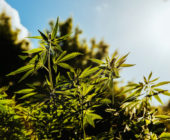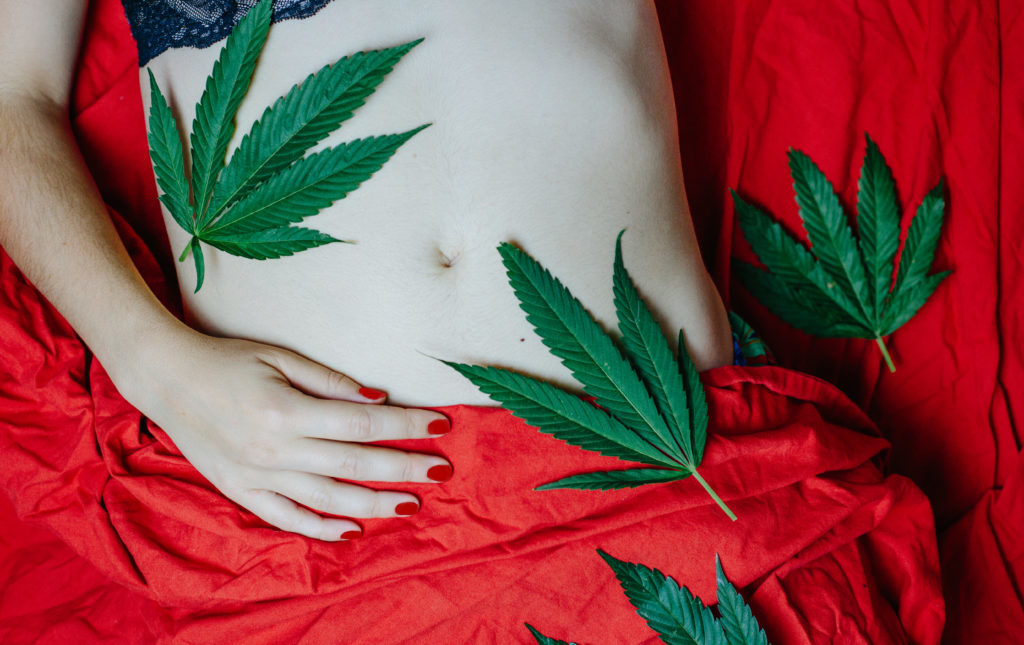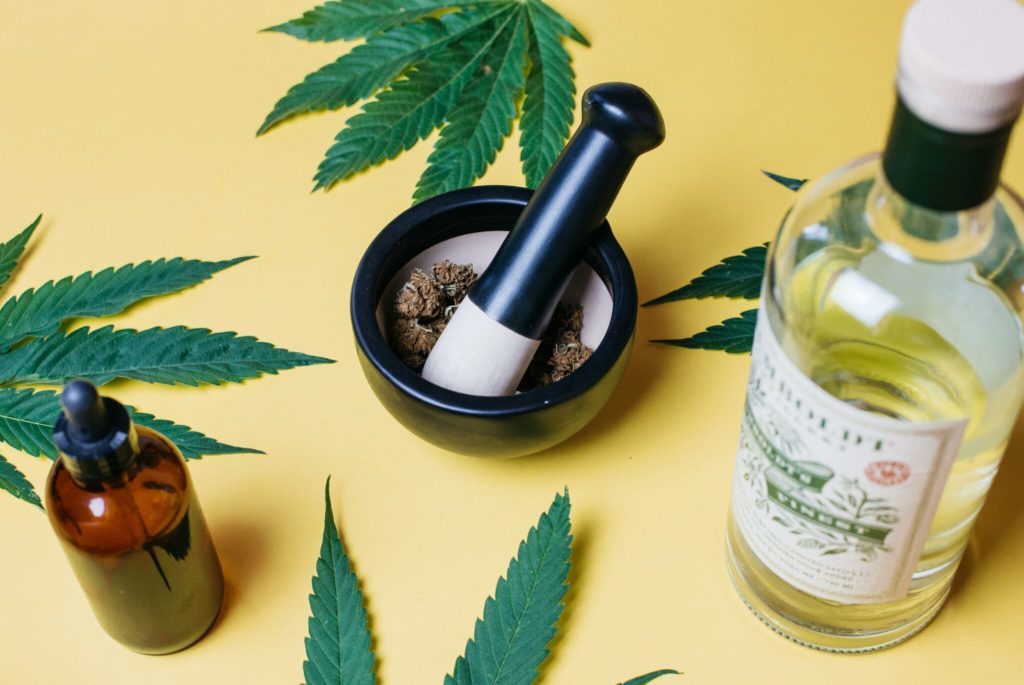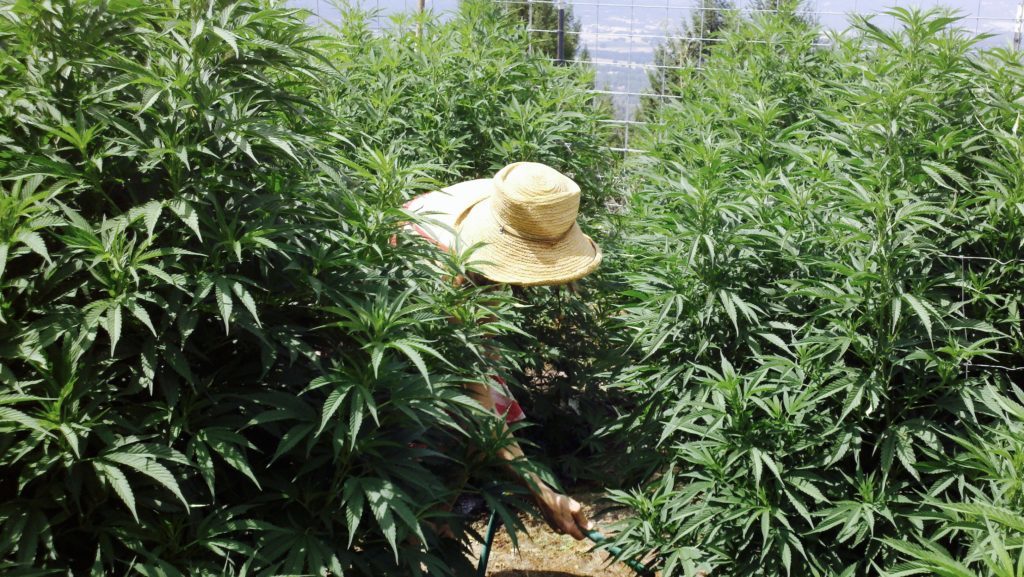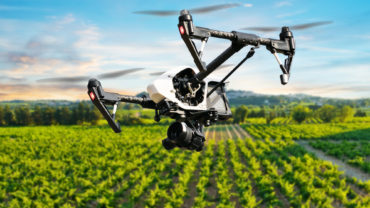Disclaimer: The content in this article is not intended to be a substitute for professional medical advice, diagnosis or treatment. Always seek the advice of your physician or other qualified health provider with any questions you may have regarding a medical condition.
Rooted in the complex worlds of plants and women’s bodies, both cannabis and the menstrual cycle are still considered taboo subjects. Yet the positive association between the two is hard to ignore.
Cannabis has proven to be such an effective treatment for dysmenorrhea that even U.S. legislators are taking action. In May 2017, the New York Assembly Health Committee passed an initiative to add severe menstrual cramps to the list of conditions that can be treated with medical marijuana. The bill would need approval from the New York Senate and Governor Andrew Cuomo before it is made law.
“Not only will this improve women’s wellness and productivity during menstruation,” the bill states, “but it will also advance New York State in one of the country’s fastest-growing industries.”
To fully understand how cannabis works in the female body, we must first look at the endocannabinoid system (ECS), a biological communication network made of receptors found in most cells which interact with neurotransmitters called endocannabinoids. This signaling system helps to regulate important physiological processes, including cardiovascular, immune and nervous system functions, as well as aspects of the female reproductive system, from menstruation, pregnancy, childbirth and breastfeeding, through the periods before, during and after menopause.
In addition to the body’s endocannabinoids, cannabinoids found in cannabis influence the body in a similar fashion, binding to ECS receptors and promoting homeostasis, the state of equilibrium among body processes. This balancing effect is at the heart of cannabis therapeutics.
Dr. Ethan Russo, a neurologist and cannabis researcher, said marijuana’s analgesic and anti-inflammatory properties can also offer relief for women.
“Unlike many other conditions, a lot of the OB-GYN indications for cannabis are ones in which it only needs to be utilized episodically: dysmenorrhea, nausea and the like,” said Dr. Russo. “Some women with endometriosis may need it more regularly.”
One of the most difficult-to-treat female disorders, endometriosis occurs when the body produces uterine tissue in places where it doesn’t belong, creating cysts that can cause excruciating pain.
Leslie of Sebastopol, California, has battled this condition since she was a teenager. For years, her symptoms were so debilitating that she made frequent visits to the emergency room and had to miss work. She tried the typically prescribed medical treatments: birth control pills, invasive surgeries and expensive drugs not covered by insurance, leaving her thousands of dollars in debt. Nothing helped.
Later, Leslie said she discovered that cannabis gave her consistent relief from endometriosis, easing symptoms and allowing her to keep working.
“I’m very thankful I can access pot easier now,” said Leslie. “It continues to be expensive, but without it I would be bedridden half the time. People don’t understand and sometimes think I’m a pot head, but I take care of business. Heavy drugs knock me out and make me nauseous.”
According to Dr. Julie Holland, author of Moody Bitches: The Truth About the Drugs You’re Taking, the Sleep You’re Missing, the Sex You’re Not Having, and What’s Really Making You Crazy, marijuana shows estrogen-like activity and possibly improves progesterone levels in perimenopausal women. The uterus is full of cannabinoid receptors which interact with compounds in cannabis.
“This helps to explain the oldest known recommended use for cannabis: an Egyptian papyrus from 1550 BCE detailed the treatment of menstrual cramps with a vaginal suppository of cannabis and honey,” said Dr. Holland.

Wendy Read, founder of California Healing Institute, an alternative medicine practice in Northern California.
Putting cannabis products directly on delicate lady parts is not unusual for Wendy Read, founder of the California Healing Institute, a school in Booneville that teaches classes in cannabis therapeutics. A holistic healer with a biochemistry degree, Read combines her science background with a nuanced approach to healing women’s reproductive issues, “treating the whole person with whole plant medicine,” often blending cannabis in formulas with other herbs.
Read uses the flowers, leaves and roots of fresh and dried, raw and decarboxylated cannabis, employing many delivery methods, including infused oils and butters, tinctures, salves, teas and baths, as well as vaginal and rectal suppositories. She recommends that women trust their intuition when deciding on a strain.
“A lot of people can choose the medicine that’s right for them simply by sniffing it in its raw form,” says Read. “If you are attracted to the smell then it’s probably for you.”
Is cannabis dangerous to female reproduction? Though anecdotal evidence exists of its uses in treating menstrual complaints, nausea during pregnancy, childbirth pain, and perimenopause and menopause symptoms, some research suggests that cannabis usage could impact the fertilization and implantation of a woman’s eggs.
What about risks associated with using cannabis during pregnancy? The research remains unclear. Dr. Stacey Kerr, a family physician and cannabis educator in Santa Rosa, said research on cannabis and pregnancy shows few negative effects beyond evidence of an association between cannabis smoking and a significantly increased risk of lower birth weight in infants.
Dr. Kerr said there is “limited evidence for pregnancy complications and NICU admissions, and insufficient evidence for later outcomes that included SIDS, academic underachievement and later substance use.” Still, women thinking about using cannabis during pregnancy should consider the potential risks. Any substance — whether pharmaceutical drug or plant medicine— that impacts so many of the body’s processes ought to be approached with care.
Note: The following recipe for a menstrual cramp tincture is safe for most women to use, though not recommended for those who are pregnant or breastfeeding. Choosing a strain of cannabis is a personal, trial-and-error procedure. Some strains appear to work better than others for menstrual pain. When ingesting cannabis, the effects are often more pronounced and longer-lasting than when smoking or vaping. Some women find a low THC/high CBD strain provides significant relief without the psychoactive effects of THC.

A cannabis tincture can offer relief from cramps and other menstrual complaints. Photo: Melati Citrawireja.
Cramp-Ease Remedy
Ingredients:
- 1/2 to 1 ounce cannabis flowers or trim, decarboxylated
- 1/8 ounce cramp bark
- 1/8 ounce skullcap
- 1/8 ounce blue cohosh
- 1/8 ounce black haw bark
- 1/8 ounce passionflower
- 1/4 ounce raspberry leaf
- 1/4 ounce dried ginger root
- High-proof alcohol, such as vodka or brandy
Directions
Grind the cannabis and other herbs into a powder in a spice grinder. Place an empty Mason jar and the alcohol in the freezer to chill. Once chilled, place the decarboxylated cannabis and other herbs into the cold jar and pour in enough alcohol to cover. Let sit in a cool, dark place for three weeks, shaking once daily. Strain tincture through a coffee filter. Store tincture in dark glass dropper bottles.
Dosage
Start with five to ten drops under the tongue. Mixture can also be diluted in tea or water. Wait one hour to assess effects. Use more as needed.



